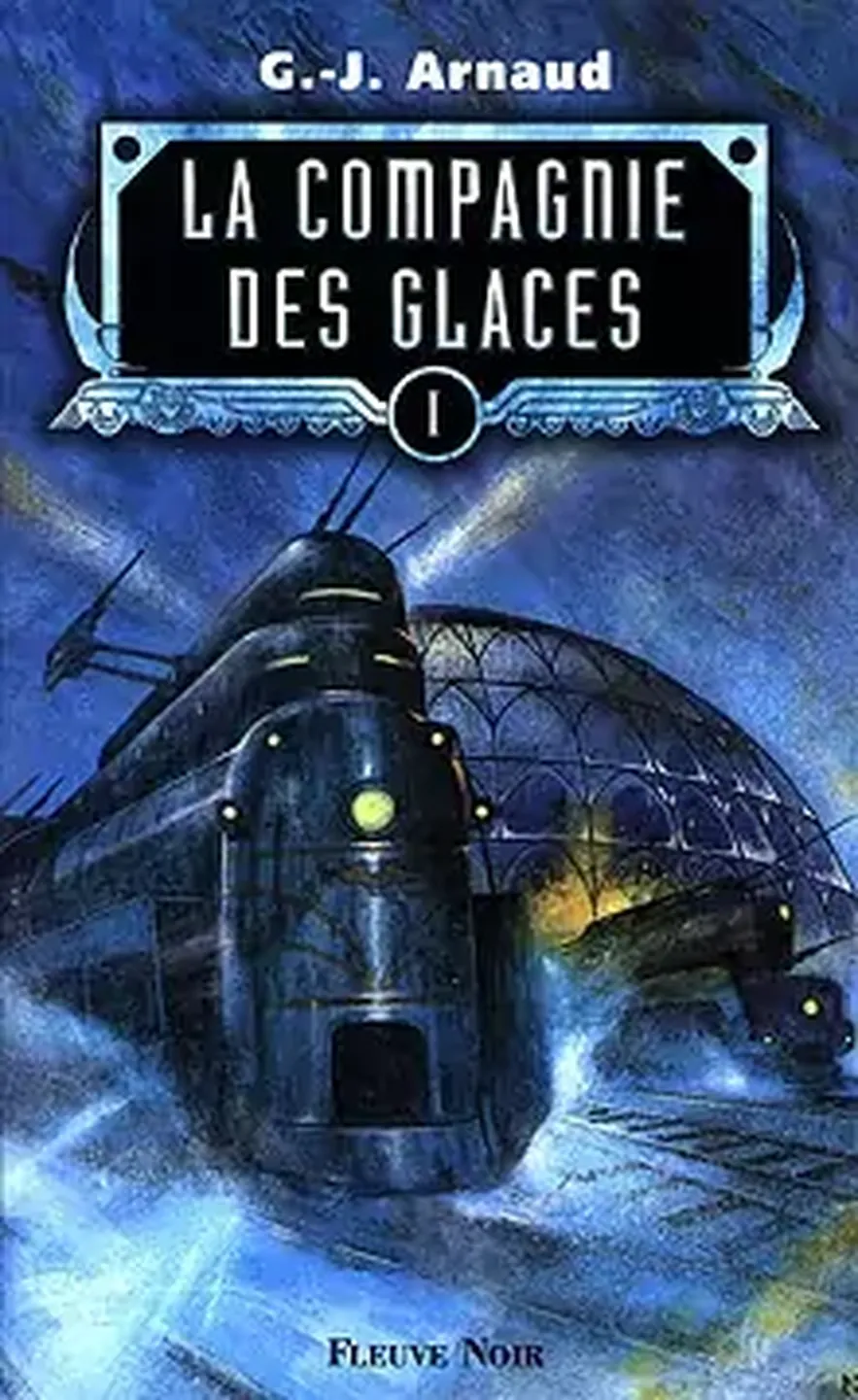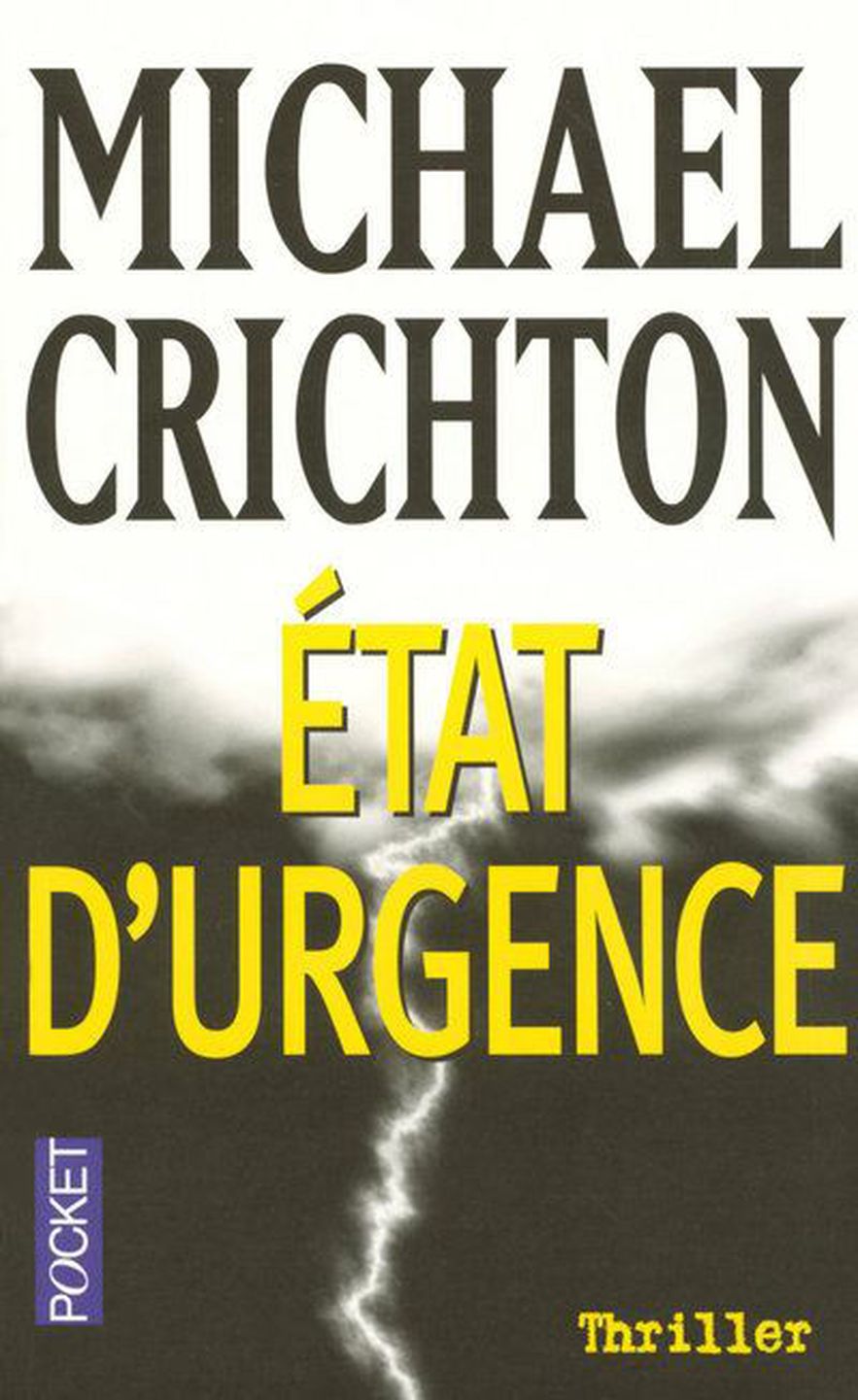A splash of water, a splash of heat, a shot of cold… Since the 1960s, climate change has inspired science fiction authors: from the visions of Ballard to the skepticism of a Michael Crichton via the anti-capitalist rage of a Jean-Marc Ligny, a short walk in 10 novels on a devastated planet.
THE NOVELTY
TERMINAL SHOCKby Neal Stephenson
With Neal Stephenson, acclaimed author ofAnatem, we are no longer at the observation but at the search for solutions. His world, ours very soon, is the victim of major disruptions: rising waters, unbearable temperatures… The author’s confidence in state action being very relative, he sends unexpected heroes (the Queen of the Netherlands, a hunter of wild pigs, a master of the Sikh stick, a Texan billionaire…) to attempt an experiment recommended by certain Nobel Prize winners and described in great detail: sending sulfur into the atmosphere to directly manipulate the climate. But can an experiment go as planned? Can’t the remedy be in places worse than the disease? Stephenson develops in eight hundred pages never heavy his hypothesis, and manages to make it attractive by a skilful construction of intertwined stories and the invention of complex characters.
Transl. from English by Benoît Domis, Albin Michel, 2 volumes, 428 and 423 p., €24.90 each.
© / Albin Michel Imaginary
THE CLASSICS
FOUR APOCALYPSESby JG Ballard (1962-1966)
In a tetralogy that marked the 1960s, JG Ballard imagined four apocalypses, four natural disasters arising from the four elements and ravaging the planet: Drought, The Sunken World, The Wind from Nowhere, The Crystal Forest. Refusing the rules of the genre, he composes surreal and hallucinating paintings. More than survival, a frequent theme of post-apocalyptic stories, it depicts in unforgettable images the agony of a world: omnipresence of an implacable sun, engulfment by the sea, devastating hurricanes. No doubt because sixty years ago this was still only prospective, there is less a cry of alarm in these four books than the prophecy of a visionary poet. And an open door to British SF, which both Christopher Priest and John Brunner will borrow.
Drought, crystal forest, The Sunken World, trans. from English by Michel Pagel, Folio SF, 304 p., €8.70; 272 pages, €8.70; 240 pages, €8.10. Ballard himself did not want it to be reissued The Wind from Nowhere.
THE BLIND HERD, by John Brunner (1972)
Global warming seen from below. Far from geopolitical tirades or scientific explanations, John Brunner shows the consequences of climate change on daily life: prohibited beaches, multiple allergies, more resistant microbes, undrinkable water and… wearing a mask is compulsory. Adults suffer from respiratory ailments, children are born with disabilities. And the President of the United States spends his time on vacation, sends sibylline messages to the world and refuses to believe in the climatic danger. Can we do more predictive than this fascinating novel? Adopting the technique of John Dos Passos, Brunner integrates newspaper articles and advertisements into his text, divided into as many chapters as there are months in the year during which the book takes place.
Transl. from English by Guy Abadia, Le Livre de poche, 540 p., €8.90.

The best of SF
© / The pocket book
BIG TIME, by Bruce Sterling (1994)
Those who remember the movie Twister (1996) will find themselves here on familiar ground, at least on the theme. In 2031, the American Middle West, ravaged by gigantic tornadoes, has become a desert. A team of computer scientists track the phenomenon aboard DIY gear and equipment that is no less. They are looking for the F6, the queen of tornadoes, the one who will sweep away our reckless world. Instead of dwelling on the action that this summary seems to promise, Bruce Sterling, one of the inventors of cyberpunk, paints the melancholic sadness of these great American spaces suddenly become barely habitable and prefers to dwell on the feelings of his heroes only on sub-plots that he treats in a very (too sometimes…) allusive way. road movie survivalist, big time don’t forget to talk about the social disintegration that follows disasters.
Transl. from English by Jean Bonnefoy, Le Livre de poche, 292 p., €9.
THE ICE COMPANY, by G.-J. Arnaud (1980-2005)
Cock-a-doodle Doo ! The longest SF saga in the world is French. In 98 novels, G.-J. Arnaud, 400 works on the clock ranging from thriller to erotic through anticipation, imagined life on an Earth covered in ice after an explosion of the Moon blocked solar radiation. Power is held there by all-powerful railway companies. But mutants capable of resisting the cold, the Roux, challenge this power. Sometimes written in a hurry but carried away by the powerful breath of the soap operas of which he wants to be the heir, The ice cream company is the perfect example of an entertaining, popular and always inventive SF. It has also been declined in series, comics and role-playing games, most of them, alas, perfectly unworthy of the original…
Black River, €6 per volume.

The best of SF
© / Black River
THE MOTHER OF STORMSby John Barnes (1994)
The basic hypothesis of this panting catastrophe novel is as geopolitical as it is ecological. In 2028, at war with Siberia, the United Nations detonated their enemy’s missiles and suddenly released the methane buried in the polar seas. This causes a gigantic greenhouse effect. And the storms break over the flooded lands… Faced with this, the world (well, especially the United States…) is getting organized. Multiple and well-typed characters, choral organization of the chapters, credible scientific descriptions without being intrusive, the novel does not let go. John Barnes’ faith in man goes hand in hand with a faith in controlled progress, and it is ultimately technology that will repair the damage of militarism.
Transl. from English by Jean-Daniel Brèque, The Pocket Book, 701 p., €8.90.
MARA AND DANN, by Doris Lessing (2001)
Who remembers it? Doris Lessing, Nobel Prize for Literature 2007, is also an author of anticipation. Of his works of SF, not always his best, let’s be frank, stands out a short cycle of two novels, Mara and Dan And The History of General Dann, happens on land deprived of water. It is not, one should be surprised, not science that interests Lessing, very sparing in detail on the origin of the catastrophe, but the painting of a dried up world where superstition replaces knowledge. Its two heroes, two children, try to survive where more and more religious delusions are becoming the only answer to daily anguish. With the dryness of a style that matches the landscapes encountered, the author of golden book offers us here a rigorous and very symbolic story held from start to finish.
Transl. from English by Isabelle Philippe, I read, 664 p., 8 €.
EMERGENCY STATE, by Michael Crichton (2004)
Haloed by the triumphs of Jurassic Park and of Harassment, the king of the “techno thriller” tackled the problem of global warming in 2004. His hero, a lawyer specializing in environmental issues, discovers that he has been abused by eco-terrorists, eager to cause disasters to justify actions in favor of the fight against global warming. On the form, it’s excellent Crichton: short chapters, hasty action, hero sailing from Antarctica to Melanesia, appearance of scientific seriousness… On the merits, it is more debatable. Crichtron believes in global warming but questions human responsibility, making environmentalists misguided fanatics. According to many specialists, he allowed himself to interpret in his own way figures that say the opposite of what he says. Pleasant to read, Emergency state undoubtedly remains the only climatosceptic best-seller, which is both its originality and its limit.
Transl. from English by Patrick Berthon, Pocket, 736 p., €9.20.

The best of SF
THE CLIMATE TRILOGY, by Kim Stanley Robinson (2006-2008)
With Kim Stanley Robinson, we know that we will have both voluminous and documented. The author of the classic Mars Trilogy applied the same recipe to his Climate Trilogy : numerous scientific explanations, scale of the fresco (2000 pages in total), intelligence and realism of the reflection. Its hero, a Californian senator who will become president in the last volume, introduces us to the mysteries of political decisions hampered by distrust of scientists and the undermining work of lobbyists devoted to fossil fuels. If the risk of didacticism is not always avoided, the overview is rigorous and helps to better perceive the difficulties in responding to issues that Robinson specifies with a rare force of conviction.
The 40 signs of rain, 50° below zero, 60 days and after, trans. from English by Dominique Haas, Pocket, 512 p., €8.75; 768 pages, €10.80; 704 pages, €10.80.
AQUATM, by Jean-Marc Ligny (2006)
With Jean-Marc Ligny, a change of gear: we no longer denounce climate madness, but the economic and social conflicts that it can give rise to. In Burkina Faso, in a world where drinking water has become the first wealth, the discovery of a giant groundwater will arouse all possible desires. In the lead, a huge multinational that will stop at nothing. The fight opens, ruthless, bringing together as much the warrior forces as the witchcraft and a messianic sect, all this in a bubbling cauldron, traversed by tornadoes and the burning winds of the desert. A successful marriage between anti-capitalist militancy and the joys of the adventure novel, this cobblestone also marked the return to center stage of a leading author of the genre.
Folio SF, 803 pages, €12.20.
